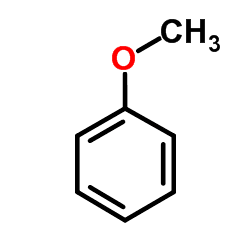Formula C7H8O Density 995 kg/m³ | Boiling point 153.8 °C Molar mass 108.14 g/mol | |
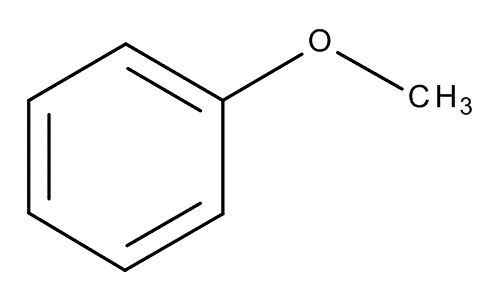 | ||
Anisole, or methoxybenzene, is an organic compound with the formula CH3OC6H5. It is a colorless liquid with a smell reminiscent of anise seed, and in fact many of its derivatives are found in natural and artificial fragrances. The compound is mainly made synthetically and is a precursor to other synthetic compounds. It is an ether.
Contents
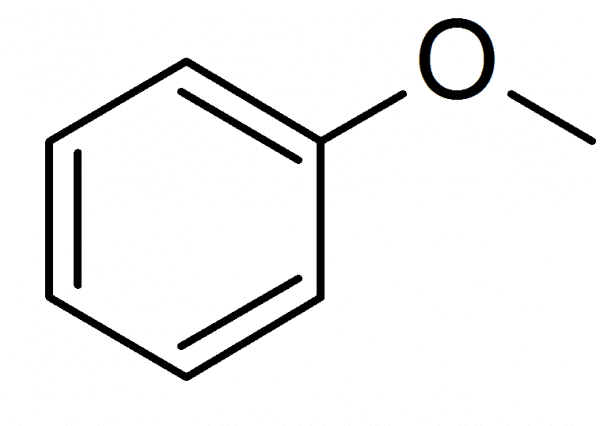
Reactivity
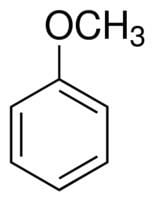
Anisole undergoes electrophilic aromatic substitution reaction more quickly than does benzene, which in turn reacts more quickly than nitrobenzene. The methoxy group is an ortho/para directing group, which means that electrophilic substitution preferentially occurs at these three sites. The enhanced nucleophilicity of anisole vs benzene reflects the influence of the methoxy group, which renders the ring more electron-rich. The methoxy group strongly affects the pi cloud of the ring as a mesomeric electron donor, more so than as an inductive electron withdrawing group despite the electronegativity of the oxygen.
Illustrative of its nucleophilicity, anisole reacts with acetic anhydride to give 4-methoxyacetophenone:
CH3OC6H5 + (CH3CO)2O → CH3OC6H4C(O)CH3 + CH3CO2H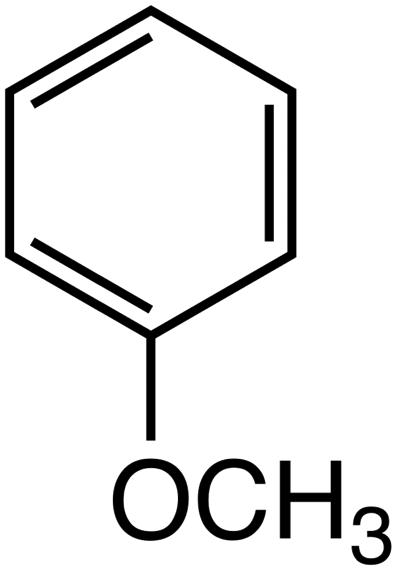
Unlike most acetophenones, but reflecting the influence of the methoxy group, methoxyacetophenone undergoes a second acetylation. Many related reactions have been demonstrated. For example, P4S10 converts anisole to Lawesson's reagent, [(CH3OC6H4)PS2]2.
The ether linkage is highly stable, but the methyl group can be removed with hydroiodic acid:
CH3OC6H5 + HI → HOC6H5 + CH3IPreparation
Anisole is prepared by the Williamson ether synthesis, reacting sodium phenoxide with methyl bromide and related methylating reagents:
C6H5O−Na+ + CH3Br → CH3OC6H5 + NaBrApplications
Anisole is a precursor to perfumes, insect pheromones, and pharmaceuticals. For example, synthetic anethole is prepared from anisole.
Safety
Anisole is relatively nontoxic with an LD50 of 3700 mg/kg in rats. Its main hazard is its flammability.
